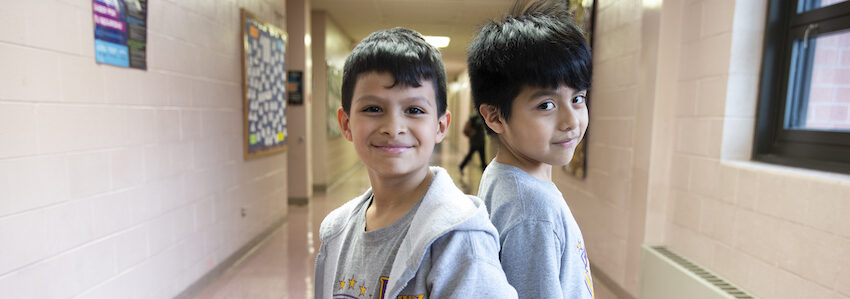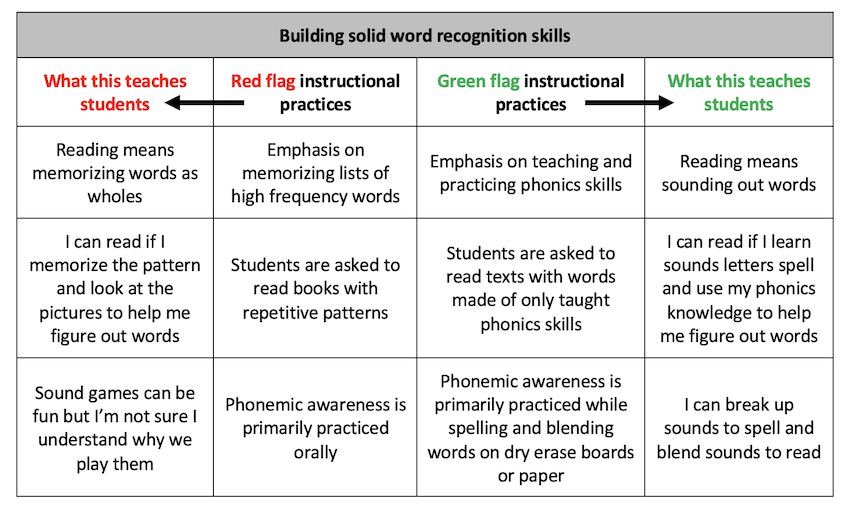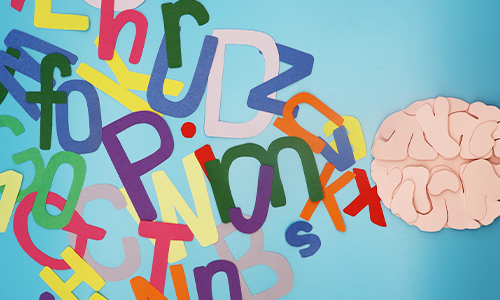
In many kindergarten and first-grade classrooms, students are tasked with memorizing a list of words commonly appearing in texts. These lists of high-frequency words tend to go by a variety of names, such as “snap words,” “sight words,” “star words,” and “red words.” Unfortunately, this practice of centering the learning on high-frequency words before students have learned to sound out words through phonics is an inefficient practice birthed out of the misconceived notion that children learn to read by memorizing whole words.
We know from decades of research that it is more effective for students to be taught individual letter-sound correspondences and use them to sound out words.
The trouble with sight words
Have you ever seen books used to teach reading to young students that have a repetitive pattern, such as “I see the police officer. I see the firefighter. I see the mail carrier,” or “In the summer, I can climb. In the summer, I can swim. In the summer, I can paint”? These books are also designed to support that same mistaken and outdated notion that students learn to read by memorizing whole words rather than sounding out words based on phonics skills learned.
These books emphasize high-frequency words, many of which use phonics patterns students have not yet been taught. This can lead students to believe that reading is a practice where they must memorize whole words rather than reading as a practice where they can use their phonics knowledge to sound the words out. This approach to reading instruction inadvertently teaches students the habits of poor readers, leading to an over-reliance on guessing at words based on the first letter, picture, or sentence context.

What researchers mean by “sight words”
Many people think students learn to read by memorizing a word’s shape or repeatedly seeing the whole word. You may have heard in schools, “Students need to learn their sight words” or “Let’s practice your sight words.” But this is different from how researchers refer to the term “sight word.” In research, a sight word isn’t merely one of several on a list of high-frequency words. It is any word that can be recognized instantly, as if by sight.
We now know students learn to read by mapping individual sounds (called phonemes) to letters that represent them (called graphemes). Scientists call this process of mapping phonemes to graphemes orthographic mapping. The more opportunities students are given to practice decoding and spelling words, the more these letter–sound correspondences “stick” in their memory. Once a word can be recognized within a fourth of a second, reading scientists call it a sight word: a word that can be read as if by sight.
Some think the value of sight words is that they help students quickly recognize words that are irregular, that is, words with spellings that “are not as clearly linked to the sounds used to pronounce the words,” such as “you,” “are,” and “what.” But as Linnea Ehri, one of the leading researchers in word recognition, said, “It is not true that only irregularly spelled words are read by sight. Rather all words, even easily decoded words, become sight words once they have been read several times…. Sight word reading refers not to a method of teaching reading but to the process of reading words by accessing them in memory.”
Learning to read irregular words
Even words we traditionally consider irregular, some of which are on high-frequency lists, have parts that can be mapped to sounds. For example, in the high-frequency word “said,” the letter “s” spells the sound /s/, and the letter “d” spells the sound /d/. The only part of the word students need to learn is the middle two letters, “ai,” which spell the sound /e/.
Research suggests that when teachers call attention to the parts of words students know and do not yet know, rather than presenting words as wholes, it can help students better learn to read and spell. Students can just memorize the part of the word that is irregular based on the phonics patterns they have learned. Some teachers call these “heart words” because students learn the irregular part of the word by heart.
As students attempt to use their phonics knowledge to decode unknown words, they will run into words with irregularly spelled parts. Teachers and administrators alike can support students in a variety of ways.
What teachers can do
There are several things teachers can do to support young readers:
- Provide opportunities for students to practice flexible decoding strategies with irregularly spelled words. Begin by teaching them to ask questions that help them tap into what they already know: “What word do I know that sounds like that word? Does it make sense in this context? Does it make sense with these letters and sounds I know?” Research suggests encouraging students to use a flexible decoding strategy aftersounding out the word using their phonics knowledge will help them become problem solvers while reading, leveraging what researchers call their “set for variability” to shift pronunciation and problem-solve words with irregular parts.
- Use decodable texts that align with your curriculum’s phonics scope and sequence. Buyer beware: Many companies market books as “decodable,” but without alignment with your curriculum’s phonics scope and sequence, it’s unlikely the text is decodable for your students.
- Examine high-frequency word lists and determine which words are phonetically regular (“can,” “his,” “me”) and which words have irregular parts (“said,” “there,” “would”). Use this information to plan for your phonics and fluency instruction.
What administrators can do
If you’re an administrator, here’s what you can do to support your literacy staff:
- Ensure your early grades classrooms have appropriate materials for phonics, including a wide range of decodable texts that align specifically with your school’s phonics scope and sequence.
- Do not create goals that include a set amount of sight words to reach by the end of the year. Instead, base student progress on curriculum-based measures, including foundational skills assessments, such as word-recognition fluency in kindergarten or oral-reading fluency in first grade.
- Ensure teachers feel supported with time for professional learning. Teachers need ample time to gather resources to plan for instruction, learn new professional practices, collaborate with colleagues, and reflect on their learning and growth.
It’s time for a change
If we want to build truly fluent readers, it’s crucial to reevaluate our initial approach to teaching reading. By teaching and practicing letter–sound correspondences in isolation and in decodable texts, pointing out parts of words that are irregular, and encouraging flexible decoding strategies, we can help students build a solid foundation in learning to read and spell and, ultimately, understand the world around them.



